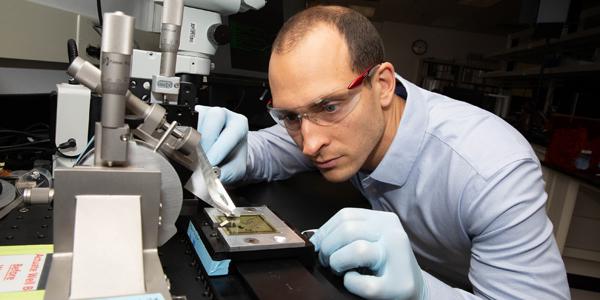LLNL Develops 3D 'Brain-on-a-Chip'
Engineers and biologists at Lawrence Livermore National Laboratory (LLNL) have developed a 3D “brain-on-a-chip” device capable of recording the neural activity of living brain cell cultures. This is a huge advancement in the realistic modeling of the human brain outside of the body.
LLNL researchers report in the paper published by the journal Lab on a Chip that the creation of a 3D microelectrode array platform allowed them to keep hundreds of thousands of human-derived neurons alive, networked and communicating in a 3D gel. Using LLNL-developed, thin-film microelectrode arrays, they were able to non-invasively record the neurons electrical spikes and bursts for up to 45 days.
Researchers said the knowledge gained from the device could inform science in developing countermeasures for warfighters exposed to chemical or biological agents, model disease or infection, evaluate environmental toxins or aid in drug discovery without the need for animal models.
They also said moving to a 3D culture model represents an important step beyond 2D brain-on-a-chip platforms, because in 3D, scientists can more fully replicate the physiology and functionality of the human brain to understand how it functions and how chemicals or other stimuli can affect it.





Comments